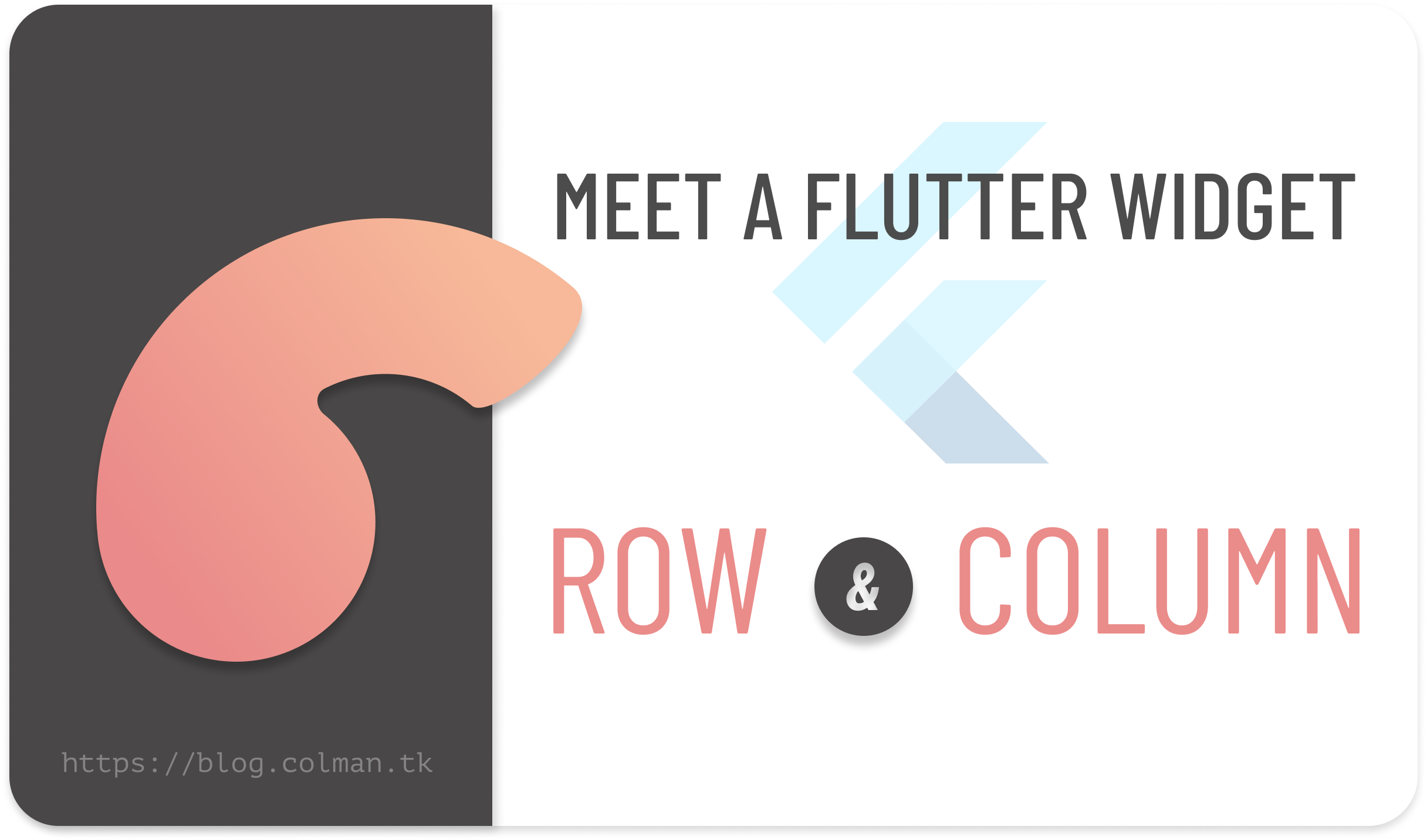You have most probably heard this phrase: Almost everything in Flutter is a Widget. That also applies to layout. From things you can see like Images and Icons to things you cannot see such as Rows, Grids, Spaces, Alignment etc.
Consider the User Interface (UI) below;

This can be broken down into smaller and simple widgets which can then be composed back up. This is done by identifying each piece of the UI and deciding the type of layout widget to use.
The UI above may look complex, but it’s just a clever arrangement of a few widgets in either Rows or Columns as shown;

LEGEND:
- Green: Consists of Magenta
ROWS - Magenta: Consists of Yellow
COLUMNS - Yellow : Consists of Red
ROWS - Red : Consists of Blue
COLUMNS
See a simplified version below;

As you can see from the above image, It all boils down to arrangement.
You can accomplish lots of complex layouts using only the basic ROW and COLUMN widgets
ROW vs COLUMN
The Row and Column widget are very similar. The only difference is in how they layout their children.
You control how a Row or Column lays out its children using the mainAxisAlignment and crossAxisAlignment properties.
For a Row, the main axis runs horizontally and the cross axis runs vertically.
For a Column, the main axis runs vertically and the cross axis runs horizontally.

The MainAxisAlignment and CrossAxisAlignment enums offer a variety of constants for controlling alignment.
MainAxisAlignment
The MainAxisAlignment is an enum that controls how the children should be placed along the main axis in a flex layout.
It has the following options:
-
start: This option places the children of the widget ( usually a Row or Column ) as close to the start of the main axis as possible. -
end: This option is used to place all the children as close to the end of the main axis as possible. -
spaceBetween: This option simply places free space evenly between the children. -
spaceAround: This option places free space evenly between the children as well as half of that space before and after the first and last child. -
spaceEvenly: This option evenly spaces all the children
CrossAxisAlignment
This is an enum that controls how the children should be placed along the cross axis in a flex layout.
It has the following options:
-
start: This option places the children of the widget as close to the start of the cross axis as possible. -
end: This option is used to place all the children as close to the end of the cross axis as possible. -
center: This option is used to place the children so that their centers align with the middle of the cross axis. This is the default cross-axis alignment. -
stretch: This option requires the children to fill the cross axis. This causes the constraints passed to the children to be tight in the cross axis. -
baseline: This option places the children along the cross axis such that their baselines match.
